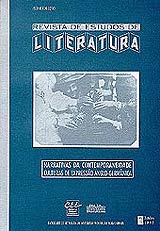A Casa Desabitada: A Narrativa no Fim do Milênio
DOI:
https://doi.org/10.17851/2317-2096.5..145-153Resumen
Este artigo apresenta a casa como imagem fundadora da narrativa e a cidade como imagemfundadora da narrativa moderna. Com a crise da modernidade, essas duas imagens arquetípicas se enfraquecem e passam a ser representadas na narrativa contemporânea como o lugar da falta e da perda, ou como simulacro. A novela A tarde de um escritor, de Peter Handke, propicia aqui a discussão sobre o novo tratamento dado à casa e à cidade na narrativa do fim domilênio.
Descargas
Citas
DUMAS, Marguerite: Escrever. Trad. Rubens Figueiredo. Rio de Janeiro: Rocco, 1994.
PROUST, Marcel: Sobre a leitura. Trad. Carlos Vogt. Campinas: Pontes, 1989.
RYBCZYNSKI, W. Vida nas cidades. São Paulo: Record, 1995.
ÁVILA, Myriam: O caracol e sua concha. In: Cartas a Mário. Cadernos de pesquisa, Napq/UFMG, n. 11, 1993.
HANDKE, Peter: A tarde de um escritor. Trad. Reinaldo Guarany. Rio de Janeiro: Rocco, 1993.
BAKHTIN, Mikhail: Questões de literatura e de estética (A teoria do romance). São Paulo: UNESP, 1993.
Descargas
Publicado
Cómo citar
Número
Sección
Licencia
Derechos de autor 1997 Myriam Ávila (Autor)

Esta obra está bajo una licencia internacional Creative Commons Atribución 4.0.
Authors who publish with this journal agree to the following terms:Authors retain copyright and grant the journal right of first publication with the work simultaneously licensed under a Creative Commons Attribution Non-Commercial No Derivatives License that allows others to share the work with an acknowledgement of the work's authorship and initial publication in this journal.Authors are able to enter into separate, additional contractual arrangements for the non-exclusive distribution of the journal's published version of the work (e.g., post it to an institutional repository or publish it in a book), with an acknowledgement of its initial publication in this journal.Authors are permitted and encouraged to post their work online (e.g., in institutional repositories or on their website) prior to and during the submission process, as it can lead to productive exchanges, as well as earlier and greater citation of published work (See The Effect of Open Access).





